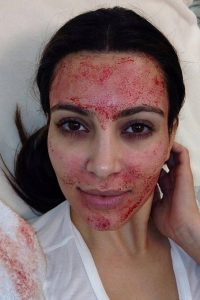The eyes are very much the focal point of our faces. Any irregularities in this area can quickly make you look tired and aged. Eye creams after eye creams promise to remove dark circles and brighten the eyes with hefty price tags and tiny bottles. Here we look at the non-surgical treatments available to banish those bags that actually work…
Common problems with the eye area:
- Heavy eyes
- Hooded eyelids
- Deep under eye circles
- Sunken eyes
- Crow’s feet
The majority of these issues are caused by the thinning of your skin around the eye area due to ageing. The loss in elasticity and volume causes the area to look tired and lose its youthful glow.
Each of these problems can be easily treated with the correct combinations of Botox and dermal fillers. This can reduce the appearance of tired skin and brighten up your eyes, boosting your self-confidence.
Which treatment is right for me?
Heavy Eyes / Hooded Eyelids
You may have noticed that your brow has dropped causing your eyelid to rest heavily on your lash line. This can obstruct your vision and can result in you needing to prop the area up, particularly if you’re applying make-up such as eyeshadow. Many believe the only cure is a surgical blepharoplasty. In some cases this is true however there is a non-surgical option for those of you with minor hooding of the eyelid…
Treatment: Brow Lift
Using Botox injections just above the eyebrow, your eyelid can be stretched out by relaxing the muscles. This minimises their hooded appearance. The treatment takes just 20-30 minutes to complete with results being noticed fully 10-14 days after the procedure. The effects from the Botox will last 12 weeks and after this it can be “topped up” with another appointment.
Deep under eye circles / sunken eyes
The skin around your eyes thins out over time which can cause your eyes to look darker. This sunken appearance is known as ‘bags under your eyes’ and is particularly apparent first thing in the morning. This is a very common problem and is one of the first signs of skin ageing.
Treatment: Tear Trough Rejuvenation
Tear Trough Rejuvenation uses dermal fillers injected just under the eye into the ‘tear trough’. Once the area under the eye has re-gained volume it produces a youthful, brightening effect. Treatment time is 30 minutes and full results can be seen after 10 days. This treatment can be re-administered after 12 weeks.

The Kardashians love PRP
Treatment: Platelet Rich Plasma Therapy
The use of Platelet Rich Plasma Therapy otherwise known as PRP or the Vampire face lift can help to banish dark circles. The purpose of the treatment is to regenerate and rejuvenate the skin surface using the bodies own blood. The practitioner will re-inject your ‘platelet-rich-plasma’ into the problem area. This natural process promotes youthful skin under the eyes causing dark circles to lighten.
Patients can see full results from PRP 3-4 weeks after treatment.
Crow’s feet
Crow’s feet are the formation of wrinkles at the side of your eyes, replicating the image of a birds feet (hence the name!)
Crow’s feet normally appear from the movement of smiling. Although we love smiling, we hate that it makes us look older than we are so fortunately there is a very simple treatment to combat them.

Naomi Watts showing Crow’s feet around her eyes.
Treatment: Botox
By using Botox injections, practitioners can relax this area causing the wrinkles to fade and your muscles to relax. This means the next time you smile, laugh or squint the crow’s feet will have magically disappeared! Treatment time is 20-30 minutes, with results being visible after a week and the option to have the treatment again after 12 weeks.
Non-Surgical Treatments as a Model at Cosmetic Courses
Cosmetic Courses has been training medical professionals in the UK since 2002. As one of the longest-established providers we pride ourselves on the quality of our training and the products we use for treatment. This means that you are receiving the safest possible treatment as a model with us.
If you would like to speak to one of our consultants or to book in for any of our Non-Surgical Facial Aesthetic Treatments please call us now on 01844 390110 or register here to receive further information from our friendly team.







